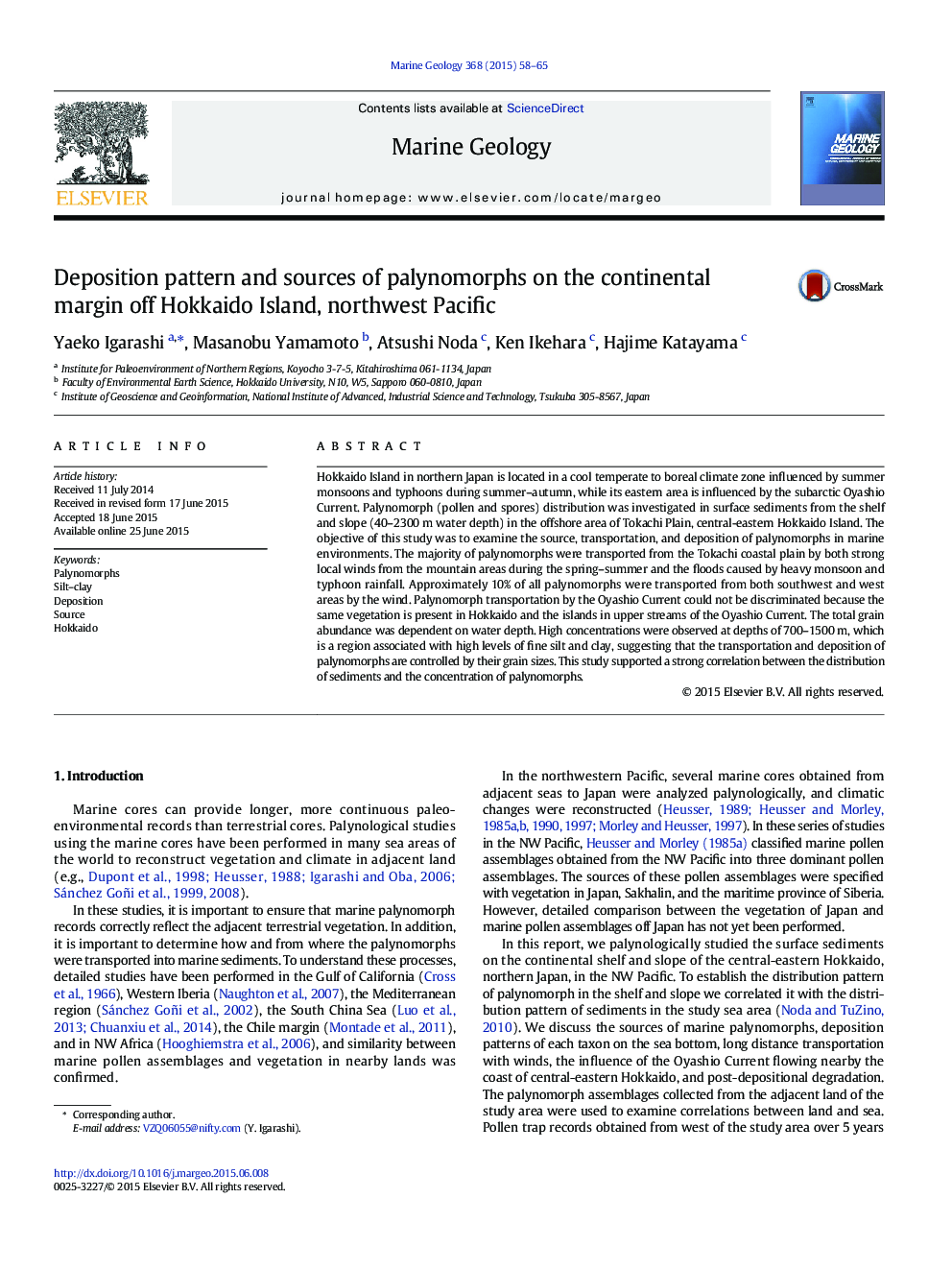| کد مقاله | کد نشریه | سال انتشار | مقاله انگلیسی | نسخه تمام متن |
|---|---|---|---|---|
| 4718202 | 1639084 | 2015 | 8 صفحه PDF | دانلود رایگان |
• Palynomorphs on the shelf-slope off Hokkaido were mainly transported from the adjacent land by local wind and floods
• Palynomorphs concentrate highly in 700–1500m depth which correspond to higher silt, clay and oxygen minimum zone
• Redistribution of palynomorphs is attributed according to their grain sizes rather than better preservation of palynomorphs
• Pollen transportation with south-westerly wind is 10% of all palynomorphs
Hokkaido Island in northern Japan is located in a cool temperate to boreal climate zone influenced by summer monsoons and typhoons during summer–autumn, while its eastern area is influenced by the subarctic Oyashio Current. Palynomorph (pollen and spores) distribution was investigated in surface sediments from the shelf and slope (40–2300 m water depth) in the offshore area of Tokachi Plain, central-eastern Hokkaido Island. The objective of this study was to examine the source, transportation, and deposition of palynomorphs in marine environments. The majority of palynomorphs were transported from the Tokachi coastal plain by both strong local winds from the mountain areas during the spring–summer and the floods caused by heavy monsoon and typhoon rainfall. Approximately 10% of all palynomorphs were transported from both southwest and west areas by the wind. Palynomorph transportation by the Oyashio Current could not be discriminated because the same vegetation is present in Hokkaido and the islands in upper streams of the Oyashio Current. The total grain abundance was dependent on water depth. High concentrations were observed at depths of 700–1500 m, which is a region associated with high levels of fine silt and clay, suggesting that the transportation and deposition of palynomorphs are controlled by their grain sizes. This study supported a strong correlation between the distribution of sediments and the concentration of palynomorphs.
Journal: Marine Geology - Volume 368, 1 October 2015, Pages 58–65
